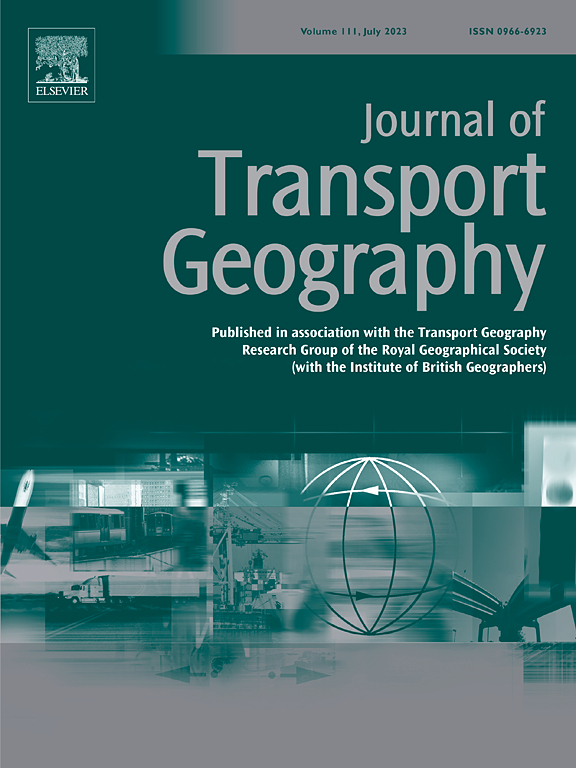建筑环境对拼车率的非线性影响:共享动机的差异
IF 5.7
2区 工程技术
Q1 ECONOMICS
引用次数: 0
摘要
拼车将乘客聚集在相似的路线上,提供了一种可持续的替代方案,提高了交通效率,缓解了拥堵,减少了空气污染。然而,目前拼车比例仍然很低,现有的研究没有充分解决共享动机和建筑环境对其采用的综合影响。为了解决这一差距,我们开发了一种基于规则的算法,根据个人出行模式推断乘车动机,从大量观察到的乘车数据中提取,其阈值由基于时间的抽样验证方法确定。采用极端梯度提升模型(XGBoost)和偏相关图(PDP),进一步分析了建筑环境对不同用户群体乘车比例的非线性影响。结果表明,我们的算法在准确性方面明显优于k-means聚类,目的地的公司密度是拼车比率的关键决定因素。此外,不同用户群体的出行模式和建筑环境的非线性效应均存在显著的异质性。这项研究为政府和交通网络公司(TNCs)如何通过基于建筑环境的战略调整来促进拼车服务提供了有价值的见解。本文章由计算机程序翻译,如有差异,请以英文原文为准。
Nonlinear effects of built environment on ridesplitting ratio: Discrepancies across sharing motivations
Ridesplitting consolidates passengers with similar routes, offering a sustainable alternative that enhances traffic efficiency, mitigates congestion, and reduces air pollution. However, currently the ridesplitting ratio remains low, with existing research inadequately addressing the combined effects of sharing motivations and built environment on its adoption. To address this gap, we develop a rule-based algorithm to infer ridesplitting motivations based on individual travel patterns, extracted from a massive set of observed ride-hailing data, the thresholds of which are determined by a time-based-sampling validation method. Employing eXtreme Gradient Boosting (XGBoost) models and partial dependence plots (PDP), we further analyze the nonlinear impacts of the built environment on the ridesplitting ratio across different user groups. Results indicate that our algorithm significantly outperforms k-means clustering in terms of accuracy, with company density at the destination being a key determinant of the ridesplitting ratio. Additionally, significant heterogeneity is observed in both travel patterns and the nonlinear effects of the built environment among different user groups. This study provides valuable insights on how governments and transportation network companies (TNCs) could promote ridesplitting services through strategic modifications based on the built environment.
求助全文
通过发布文献求助,成功后即可免费获取论文全文。
去求助
来源期刊

Journal of Transport Geography
Multiple-
CiteScore
11.50
自引率
11.50%
发文量
197
期刊介绍:
A major resurgence has occurred in transport geography in the wake of political and policy changes, huge transport infrastructure projects and responses to urban traffic congestion. The Journal of Transport Geography provides a central focus for developments in this rapidly expanding sub-discipline.
 求助内容:
求助内容: 应助结果提醒方式:
应助结果提醒方式:


